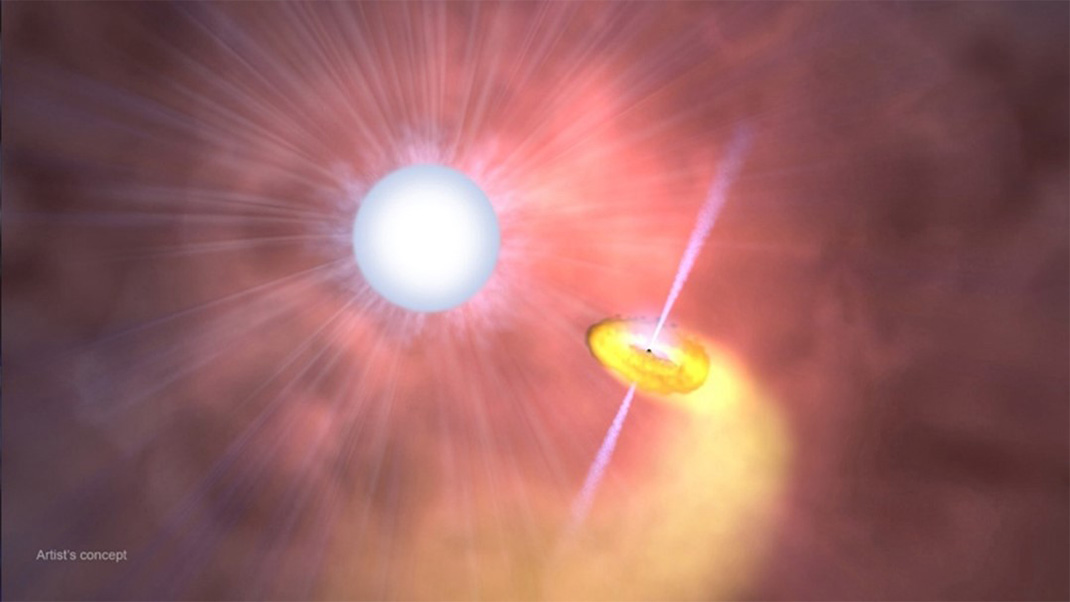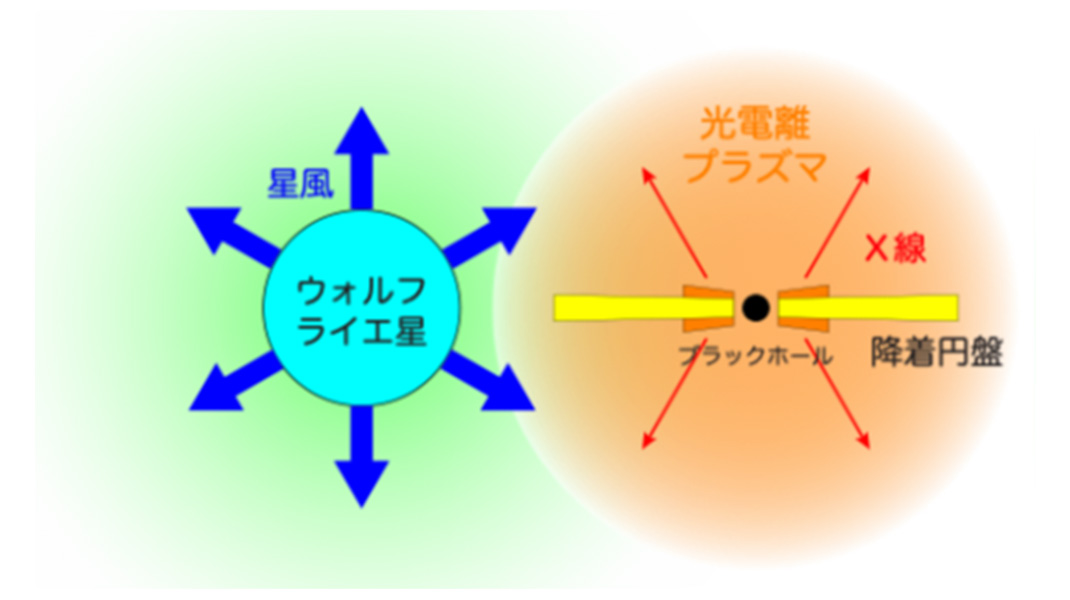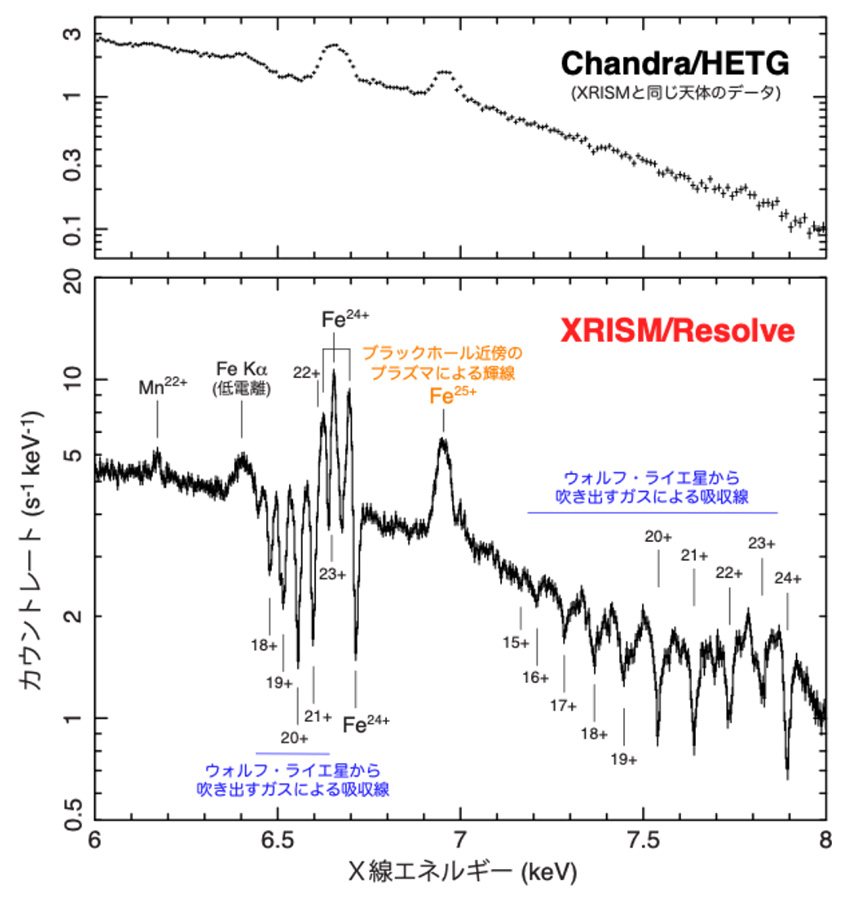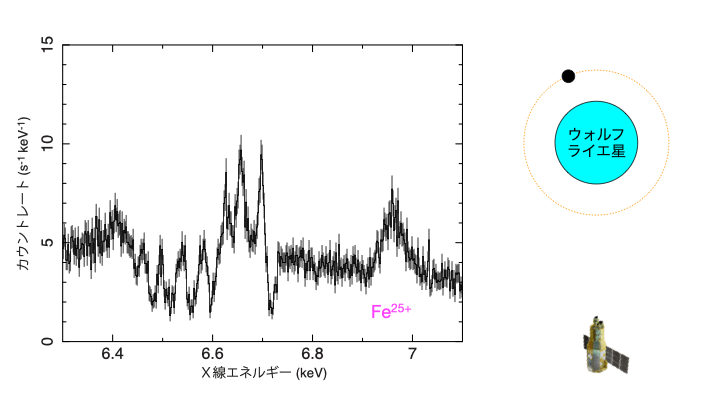Dec 04, 2024
The X-ray Imaging and Spectroscopy Mission (XRISM) captures stellar winds and black hole motion of an extraordinary X-ray binary: Cygnus X-3
Keyword:RESEARCH
OBJECTIVE.
Many stars are born as binary star systems that orbit each other while being affected by the other’s gravity and matter as they evolve. Cygnus X-3, comprising a massive Wolf-Rayet star and a black hole candidate (either a black hole or a neutron star, the former being more likely), stands out as an extraordinary example. In this binary system, the Wolf-Rayet star ejects vast amounts of gases as it orbits while being gravitationally attracted by the black hole candidate. Gases that have fallen into the black hole candidate releases immense energy in the form of X-rays, ionizing surrounding gas and forming photoionized plasma.
An international research collaboration including members of Rikkyo University recently succeeded in observing and capturing a highly detailed portrait of the gases (stellar winds) ejected from the Wolf-Rayet star, showing that the plasma near the black hole candidate is moving at several hundred kilometers per second. This was made possible with the use of the X-Ray Imaging and Spectroscopy Mission (XRISM).
This binary system is predicted to eventually become a pair of black holes that emit gravitational waves. The analysis of the data from XRISM is expected to deepen understanding of the evolution of this celestial body.
The Rikkyo members are Senior Specially Appointed Professor Shunji Kitamoto, Associate Professor Shinya Yamada, Assistant Professor Makoto Sawada, and Assistant Professor Tasuku Hayashi, all from the Department of Physics at the College of Science.
Research background
Among binaries, Cygnus X-3 is an extremely exotic example. This system is located approximately 32,000 light-years from Earth, in Cygnus, one of the most recognizable constellations in the northern summer sky. It cannot be observed with visible light, but can be observed with infrared light or X-rays. One of the stars is massive and belongs to the Wolf-Rayet class, ejecting gases equivalent to several Earth masses every year. The other star is a black hole candidate (either a black hole or a neutron star). This star was born as a massive star, but believed to have transformed into its present state in a supernova explosion.
The Wolf-Rayet star is orbiting around the black hole candidate at an astonishingly close distance, completing a single orbit in less than five hours. In other words, the black hole candidate is rapidly and violently orbiting through the dense gases released by the Wolf-Rayet star (See Figure 1). Part of the gas is captured by the black hole candidate and forms an accretion disk, emitting immense energy in the form of X-rays, equivalent to several to ten days' worth of the solar energy in just one second. Exposed to this immense volume of X-rays, the surrounding gas is ionized to form what scientists call “photoionized plasma” (See Figure 2).

Figure 1: Artist impression of Cygnus X-3

Figure 2: The formation of photoionized plasma in Cygnus X-3. (Credit: JAXA)
Results of XRISM observation
black hole candidate, which orbits at a speed of several hundred km per second (see Figure 4). This observation indicates that particularly violent ionization occurs very close to the black hole candidate.

Figure 3 The XRISM/Resolve spectrum of Cygnus X-3, below. It shows the energy band between 6 to 8 keV, where signals from iron ions are clearly visible. To compare the results, the spectrum of Cygnus X-3 observed by the HETG spectrometer of Chandra observatory launched by NASA was indicated, above. The outstanding performance of Resolve, which was made possible by cooling the detector to 50 millikelvin, or about minus 273℃, enabled the detection of absorption and emission lines of various iron ions, which was previously impossible. (Credit: JAXA)

Figure 4: Energy shift of emission and absorption lines as a function of orbital phase. At right, the positional relationship of the Wolf-Rayet star and the black hole candidate is indicated, as seen from XRISM, below.
XRISM Collaboration (2024): The research results were published in The Astrophysical Journal Letters, Volume 977, issue 2, id.L34.
Research team members
Timothy Kallman (NASA/GSFC)
ODAKA Hirokazu(University of Osaka)
HAKAMATA Tomohiro(University of Osaka)
MIURA Takahiro(University of Tokyo,ISAS/JAXA)
YAMAGUCHI Hiroya(ISAS/JAXA):Responsibility
KITAMOTO Shunji, YAMADA Shinya, SAWADA Makoto, HAYASHI Tasuku(Rikkyo University)
others XRISM Collaboration member